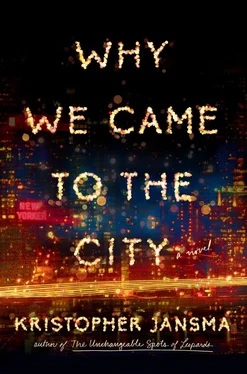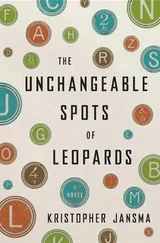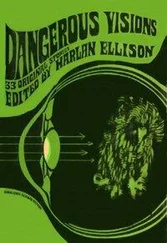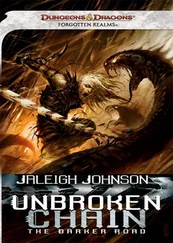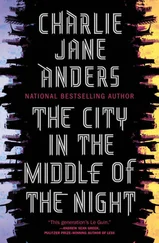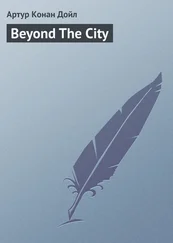Far off in the distance, William spotted a red pickup truck parked by a chain-link fence. Hitched up behind it was a little two-wheeled U-Haul trailer with its orange rolltop up. A man who William presumed to be Skeevo was rifling through the odd items inside.
He was tall and wore a grease-stained flannel shirt buttoned to the top and to the wrists. His pants were ripped, revealing kneecaps the same mocha-tan color as his neck and hands. Despite the July heat, he was wearing a half-disintegrated hand-knit winter cap.
Irene let go of William’s hand. Disappointment settled in as she moved farther away, and it grew measurably along a neat curve in his mind, like a once-meager debt accruing interest. He walked faster, trying to reduce the distance between them. With each stride he felt the load leveling off. By the time he got to her side again he was out of breath, but happy again. He shook Skeevo’s hand as if they, too, went way back. William didn’t even mind that his grip felt like a car door closing on his hand.
“What’d you bring me?” Irene asked, moving around to the back of the U-Haul and beginning to sort through the scrap. Things clanged and scraped.
Keeping his eyes on her, William shook Skeevo’s hand and introduced himself. “You work over at the dump?” he asked.
“Kind of,” Skeevo replied. “It’s not really a dump anymore.”
“The Staten Island dump isn’t a dump?”
Skeevo cast his eyes out past the fence, across the busy highway, toward several enormous green hills. “The Fresh Kills Landfill’s been closed for, like, ten years. It was supposed be temporary — you believe that? Back in 1947… then you know, one thing leads to another, and soon enough it’s the biggest landfill in the world.”
Irene had fully disappeared inside the U-Haul, and William was feeling at an utter loss. Then she emerged with a single ski under one arm, looked at it a moment in the light, dropped it to the asphalt, and dove back in again.
Skeevo was still going on about the not dump. “When they finally shut this thing down, it was taller than the Statue of Fucking Liberty. Back in the sixties, when the astronauts went up into orbit, the only man-made objects they could see from space were the Great Wall of China and this .”
“That’s… distressing,” William said, although he didn’t feel distressed at all, because Irene was pulling half a child’s stroller out of the U-Haul with a quizzical look. She placed it in a pile to one side, which William took to mean she was considering it. “So what, um, what is going on with the landfill now? They’ve finally closed it?”
“They’re turning it into a park,” Skeevo announced proudly. “Going to be three times the size of Central Park.”
William hummed. “And Skeevo —is that a… Polish name?”
He took his wallet out and thrust an ID in William’s face. “Skeevington Monkeylips McBalzac the Third,” he said. “I changed it when I left home. Got the idea from Reeny here, actually. I think everybody should be able to pick their own name, don’t you?”
William looked nervously for “Reeny,” but she was deep inside the trailer. How exactly did she know this very possibly insane person? And what did he mean he’d gotten the idea from her? Was Irene Richmond not her real name?
But then Irene began shrieking from the back of the U-Haul. William rushed over, imagining a collapsing wall of sharp objects and broken glass. Instead he found Irene straddling a segment of a large steel I-beam — running her hands wildly over its ridges and warps. Something had clearly happened to it, for the thing looked, William supposed, more like a T-beam now. The bottom edge was melted to nearly nothing. He wondered what could have done that.
“I knew you’d like it,” Skeevo grinned.
“Help me get this into the light!” Irene cried.
It took the three of them shoving as hard as they could to get it closer to the open door of the U-Haul. William guessed it weighed over four hundred pounds. He sniffed his hands after pulling them away and recoiled at the harsh, burned-chemical odor. Irene was acting as if she had uncovered the Treasure of the Sierra Madre. What did she see in it? She was so happy — he hadn’t seen her like this since they’d kissed at the hospital, not even when they were in bed together. She was like a child, overtaken by a joy far exceeding her total volume.
William closed his eyes a moment. He’d spent his whole life avoiding drinking or smoking cigarettes or pot, for fear of being addicted, and now here he was hooked on a drug that was in desperately short supply. He opened his eyes again and saw Irene and felt no doubts at all.
“We found it up in the northwest quadrant of the old landfill. They’d been relandscaping it, trying to do something about the grade for the spill-off. One of the bulldozers snagged this thing. They let me have it before anyone important figured out what it really was.”
“What is it?” William asked.
“My guy there tipped me off. It’s from one of the Twin Towers,” Skeevo whispered. “Some of the rubble they cleared from there got dumped in the landfill before they closed it up again.”
William found himself taking a quick step backward, but Irene was bending down closer so she could study it better. Then, without warning, she lifted the patch from her eye to reveal the red, puffy mess beneath it. Back in the apartment she kept the patch on, even when they slept together and even when she was actually sleeping. She took it off only in the bathroom to clean the black network of stitches. They ran around her eye socket like narrow railroad tracks.
“Jesus,” Skeevo said, a crack in his voice as he looked away.
But William didn’t mind. He was too busy watching her brilliant blue iris working behind the lid, nearly swollen over it. He watched as she studied its corners and edges, running her hands up and down its length.
“Can we get this back to the city?” she asked softly.
Skeevo agreed to give them a lift in his truck. Irene squeezed between him and William in the front seat, navigating them to the K Gallery, where she had access to Abeba’s welding tools. As they drove out of the parking lot and back up through Staten Island, Skeevo and Irene caught up on old times while they shared a joint. He didn’t ask about her eye. Instead, he wanted to know how she and William had met, and William liked how she relayed the story of meeting him at the Christmas party. The way she stroked his cheekbones as she described first seeing him. Maybe it was just the pot smoke getting to him, but it seemed like a hundred years ago.
William stared dreamily out the window as Skeevo told them all about his own fantastic-sounding life. He’d gotten married, had a child. He and Irene complained about traffic and global warming and capitalism as they drove up and over the glorious gray Verrazano-Narrows Bridge. Eventually Skeevo fished a cell phone out of his pocket and thumbed-up a video he wanted Irene to watch. It was of his wife — a pretty young Chinese woman — sitting in a plane seat somewhere, holding a baby boy with an enormous head. The head was so enormous, it seemed to be all this woman could do to support it in two hands. Skeevington Monkeylips McBalzac the Fourth — at least for now.
“Skeevs! He’s adorable! William, did you look like that when you were a baby?”
“That baby is Chinese,” William said. “I’m Korean.”
“Technically he’s half Chinese,” Skeevo said.
Irene shook her head, and even without seeing her second eyelid droop, William knew that she was sad. “Babies aren’t anything yet,” she said. “You can’t be one thing or the other until you get old enough to know what you are and what you aren’t.”
Читать дальше
